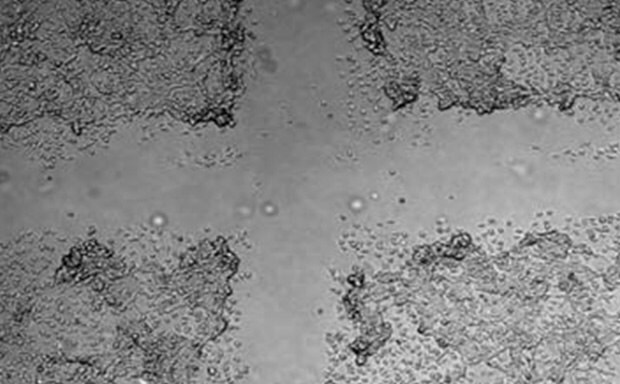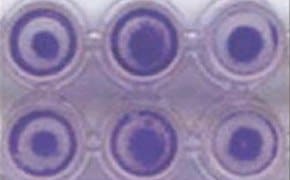Cell Migration & Invasion Assays

Cancer metastasis is the cumulative result of multiple changes in tumor cells and their microenvironment that enable cells to migrate or invade healthy tissue. Our portfolio of migration assays, invasion assays, chemotactic and haptotactic Boyden chamber assays enable researchers to simulate the conditions encountered by normal and metastatic cells in vivo.
Products
Cell Migration Assays
Cell migration is fundamental to embryonic development, angiogenesis, wound healing, immune response, and inflammation. Because metastatic disease is the key factor leading to cancer mortality, understanding cell migration mechanisms is critically important in cancer studies. Many cell migration assays employ a qualitative scratch assay or the more quantitative Boyden chamber technique.
Boyden chamber methods monitor cell migration based on chemotaxis and haptotaxis. Chemotaxis describes cell migration in response to extracellular chemical signals, while haptotaxis describes cell migration towards an immobilized extracellular matrix (ECM) protein gradient.
Both chemotaxis and haptotaxis QCM™ migration assays are available in different pore sizes and multiwell formats. QCM™ migration assays do not require the cell labeling, scraping, washing, and counting that is associated with other protocols involving calcein-AM labeling of cells.
InnoCyte™ cell migration assays in multi-well format are intended for chemotaxis cell migration. This assay measures the migration of epithelial, mesenchymal, and endothelial cell types through an 8 μm pore to a feeder layer using a cell-permeable fluorescent dye.
Scratch Assay for Cell Migration
A scratch assay is used to study cell migration and wound healing. The scratch assay generates a scratch on the surface of a confluent cell monolayer to create a narrow wound-like gap. The assay then monitors the migration of neighboring cells into the gap until the gap is filled. Our Cell Comb™ scratch assay creates a high-density field of scratches to maximize wound edges, while leaving enough undamaged cells to migrate into the gap.


Invasion by HT-1080 cells is determined by 96-well Cell Invasion Assay. NIH3T3 cells were used as a non-invasive control.
Cell Invasion Assays
A tumor’s ability to degrade the ECM components of the basement membrane and associated tissue is indicative of metastatic potential. Our QCM™ Boyden chamber cell invasion assays are a high-throughput and sensitive approach for quantifying cell invasion in vitro. In this assay, cells invade a model of the basement membrane, where the membrane pores are obstructed with a layer of ECM proteins, blocking non-invasive cells.
The Chemicon® neurite outgrowth assay uses Millipore® microporous tissue culture insert technology, which permits the passage of neurite processes through 1 µm pores, a diameter that does not permit cell bodies to pass. This assay is optimized for PC12 cells.
Related Resources
- Article: Cell Migration & Invasion Assays
Study tumor metastasis via various migration and invasion assays like Boyden chamber assay, Millicell® µ-Migration Assay, and scratch assay.
- Article: The Endothelial Cell Transwell Migration and Invasion Assay
Cell culture protocol: the endothelial cell transwell migration and invasion assay used to study angiogenesis and cancer cell metastasis. Explore over 350 PromoCell products.
- Article: Migration and Invasion Assay Chart
These charts provide an overview of various cell migration and invasion assays offered for life science research applications.
- Article: Boyden Chamber Technique
This article explains the Boyden Chamber technique for evaluating cell migration, detailing the process, appropriate pore sizes for different cell types, and the materials used in the assay.
To continue reading please sign in or create an account.
Don't Have An Account?